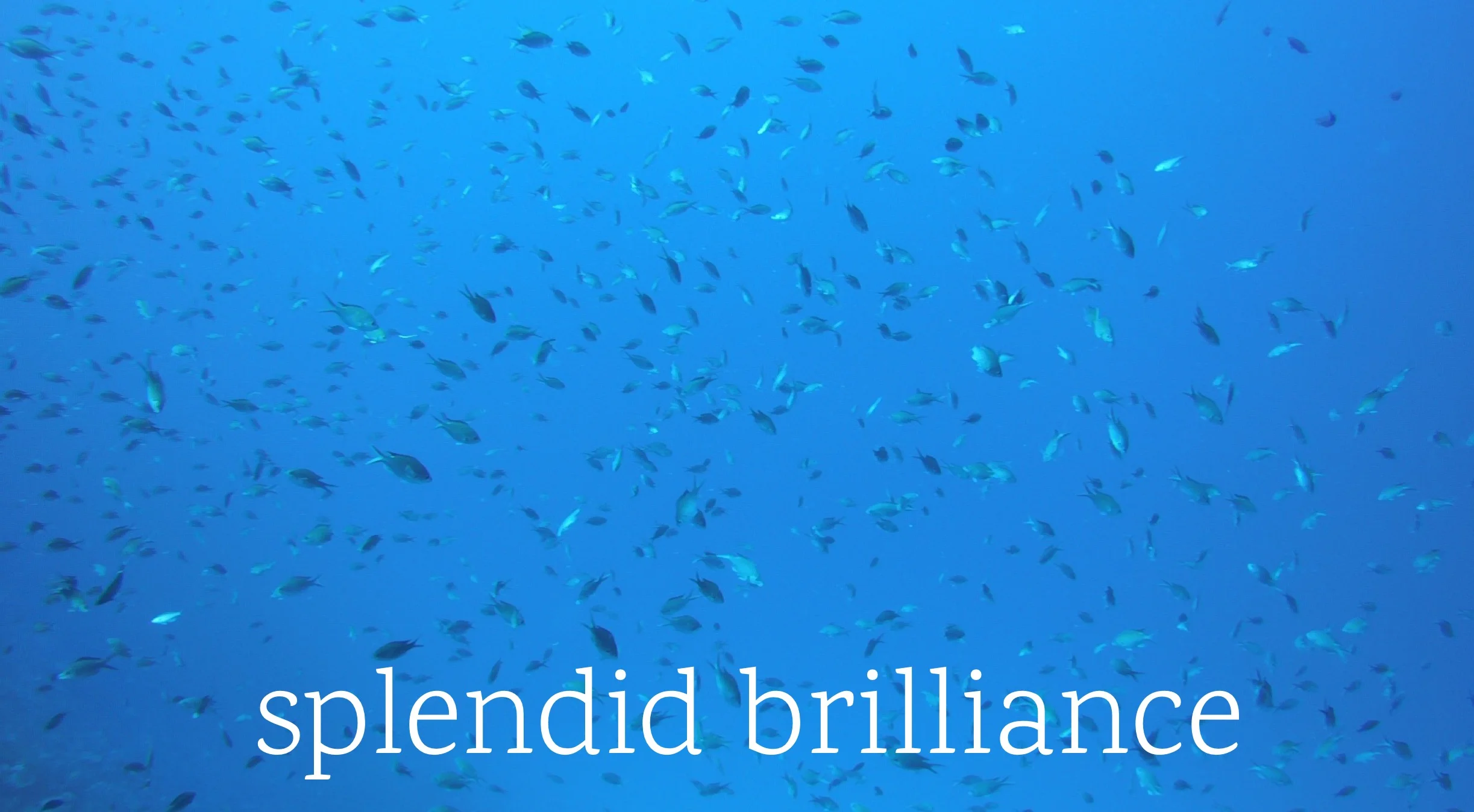Rebuilding Coral Reefs, One Coral At A Time
Today, we're going to dive in (get it?) to coral reef restoration. Some of you may have read my article in Appleseeds Magazine (2013) on saving coral reefs. Well, this summer I got to revisit that important work!
The Coral Restoration Foundation Bonaire has been working in Bonaire to restore the coral reefs. Before we get started though, how about some basics?
Coral reefs are underwater ecosystems that provide a home to thousands of marine animals. Sometimes, people describe coral reefs as underwater gardens. While their beautiful colors make us think of gardens, that's not exactly accurate because corals aren't plants. They're tiny animals!
Coral reefs are built by tiny little animals called coral polyps. There are thousands of polyps in coral reefs. Here is a nifty diagram of a single coral polyp from our friends at the National Oceanic and Atmospheric Administration (NOAA for short).
Although we think about warm water corals, the kinds of pictures you see in books and movies of bright colors and warm water and tropical fish, there are also corals in cold water (more on that some other time). Corals in both warm and cold water are essential to the health of the ocean.
But... sometimes corals die. Maybe you've seen white, bone-like "stones" near the ocean? These are usually skeletons of dead corals. Sometimes, these skeletons are sold in gift shops near beaches as paperweights and jewelry (ps: try not to wear coral jewelry. This is often live coral that was killed to make jewelry. Yuck!).
Corals die for lots of reasons. Pollution in the water, water that gets too warm, seawater with too much acid in it, catastrophic weather events (think massive hurricanes and waves) and overfishing are some of the reasons corals die.
Let's look at a dead coral reef and a healthy coral reef. Here are three pictures: the first is coral rubble found close to shore. It's where a vibrant and healthy coral reef used to be. These are the remains of a coral reef. Next, are two pictures of what the coral reef close to shore should look like: thick, healthy, and vibrant. See what differences you can notice between the photos:
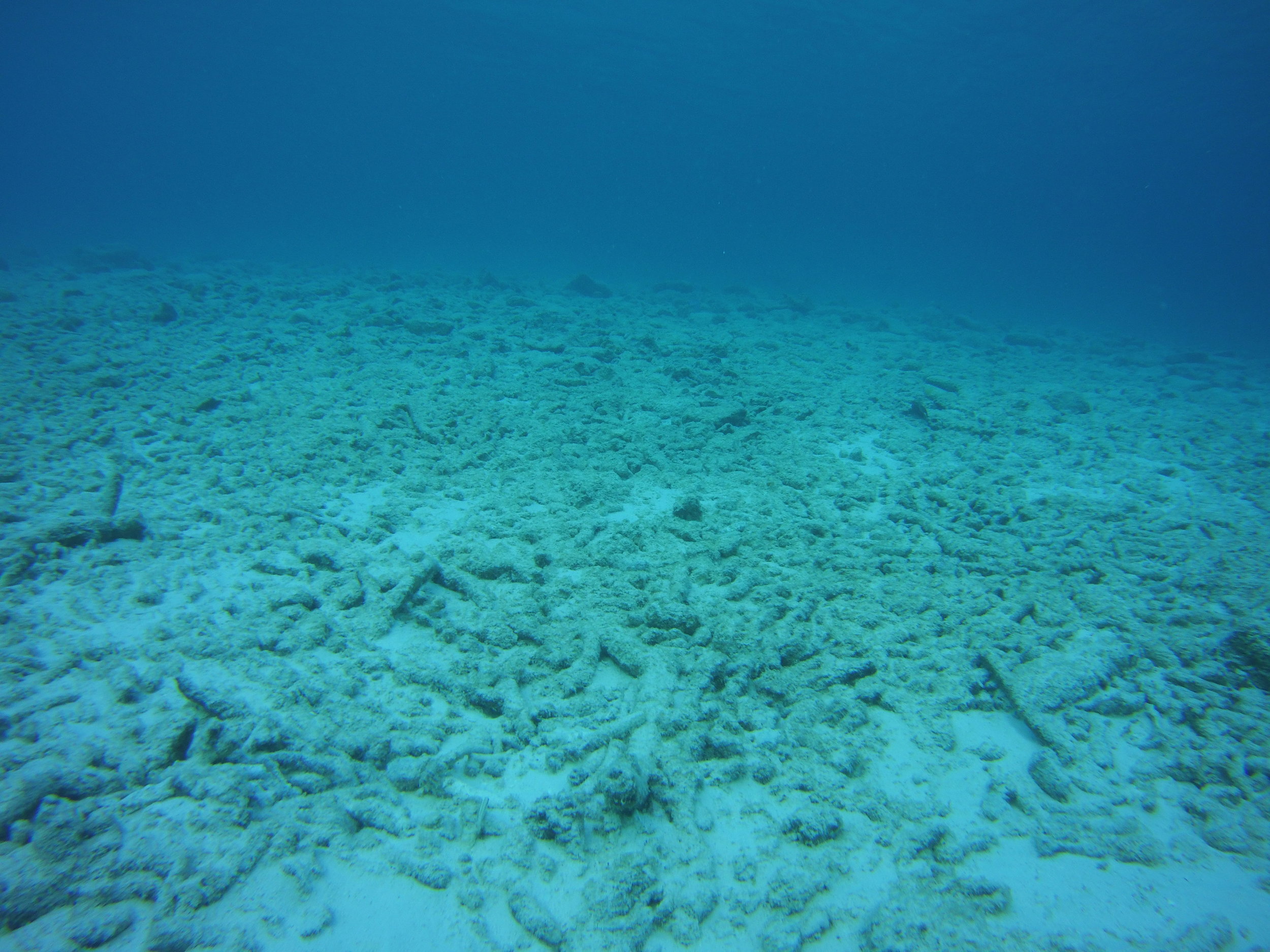
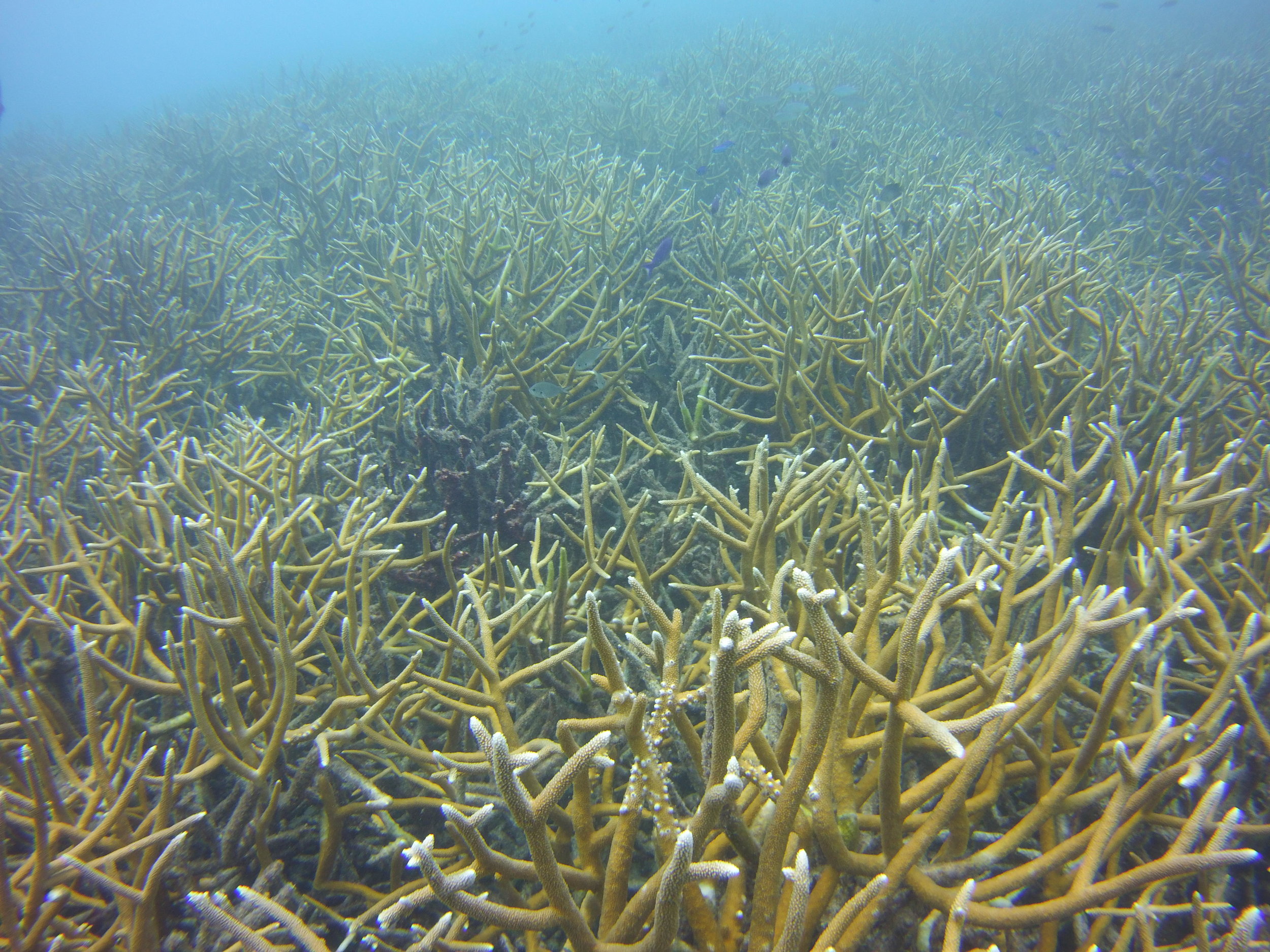

I took all three of these photos in Bonaire. Several years ago, huge waves crashed into the island of Bonaire after a hurricane. Those waves--their power, their size, and the impact when they crashed down, destroyed many of the shallow reefs close to shore. People who live in Bonaire say that before then, it was hard to swim close to shore because the coral reefs were like thick shrubs everywhere. But now, close to shore, you can wade into the water over the rubble. The other two photos are also from Bonaire. They show a healthy thicket of coral, also in shallow water, but in a protected area. This part of Bonaire did not suffer from the waves, and so the healthy coral remains. By looking at the differences, we can see what this part of the ocean is supposed to look like!
The devastation of the shallow water reefs is terrible for the ocean for many reasons. One important reason is that the reef serves as a nursery for the ocean. It's where all of the tiny fish and little creatures get their start and are protected from bigger fish.
So, what can we do?
Well, several years ago in Florida, the Coral Restoration Foundation, led by Ken Nedimyer began to experiment with ways to rebuild coral reefs. I was lucky enough to work with Ken and his team at CRF for a week when I helped transplant corals onto Molasses Reef in Florida.
When I got to Bonaire this summer I was so excited that they are working with CRF! Since I am already a trained coral conservation diver, I got busy volunteering on the coral reef and helping in the nursery. How cool is that?
Here's how it works. There are several sites: the coral reef nursery, where new corals are "grown" and then transplant sites, where those corals become part of a new coral reef.
In the photos below, you can see white trees (I like to call them underwater Christmas trees!). These are made out of plastic pipes. Hanging on those trees, on thin line, are corals. They look a little bit like fingers, or, if they have branches, like horns. You probably won't be surprised to learn that these are staghorn corals. They take their name from deer--who have horns!
Although coral polyps are animals, they can "grow" like a plant. What I mean is that if we take a small piece of a healthy coral--cut it off--and then let it grow, it will grow into a strong new piece of coral. If anyone you know gardens, sometimes gardeners do this too: create a new plant from the clipping of a healthy plant.
So, step one is to grow new, healthy corals. The new corals grow on trees in the coral nursery (just like babies, the new corals need time to grow and stay protected!). They can bounce in the ocean currents, sway back and forth, and have all the time they need to grow. They are hung on the trees on lines. While I was there, one of my jobs was to clean all of the lines to make sure that no algae got into the new corals. Who knew that underwater cleaning is such an important job?
Once they are ready, these new corals are taken to the reef. We went to the nursery and took the corals that were ready from the tree. We loaded them very gently into plastic crates and took them to a boat. On the boat, we put them in a big container of salt water to make sure they stayed wet while we got to their new home. I was so nervous for the corals as we bounced along on the waves. My job was to make sure that water covered them the whole time. I think I did a great job!
When we got to the new reef, we took the crates down under the water. Then, we used zip ties (a kind of plastic tie) to put the corals on a bamboo square. Over time, the square will disintegrate. But hopefully, by that time, the corals will have grown even more and established their new reef home! In the pictures below, you can also see me working on one of the bamboo squares.
Coral reefs are so important to our oceans. I think it's amazing that we can help corals rebuild. It took a little bit of hard thinking and ingenuity to figure out how to start to fix something. And, as I've learned, whether it's cleaning lines or putting water on corals or zip tying them, there are lots of ways to help make a big difference!
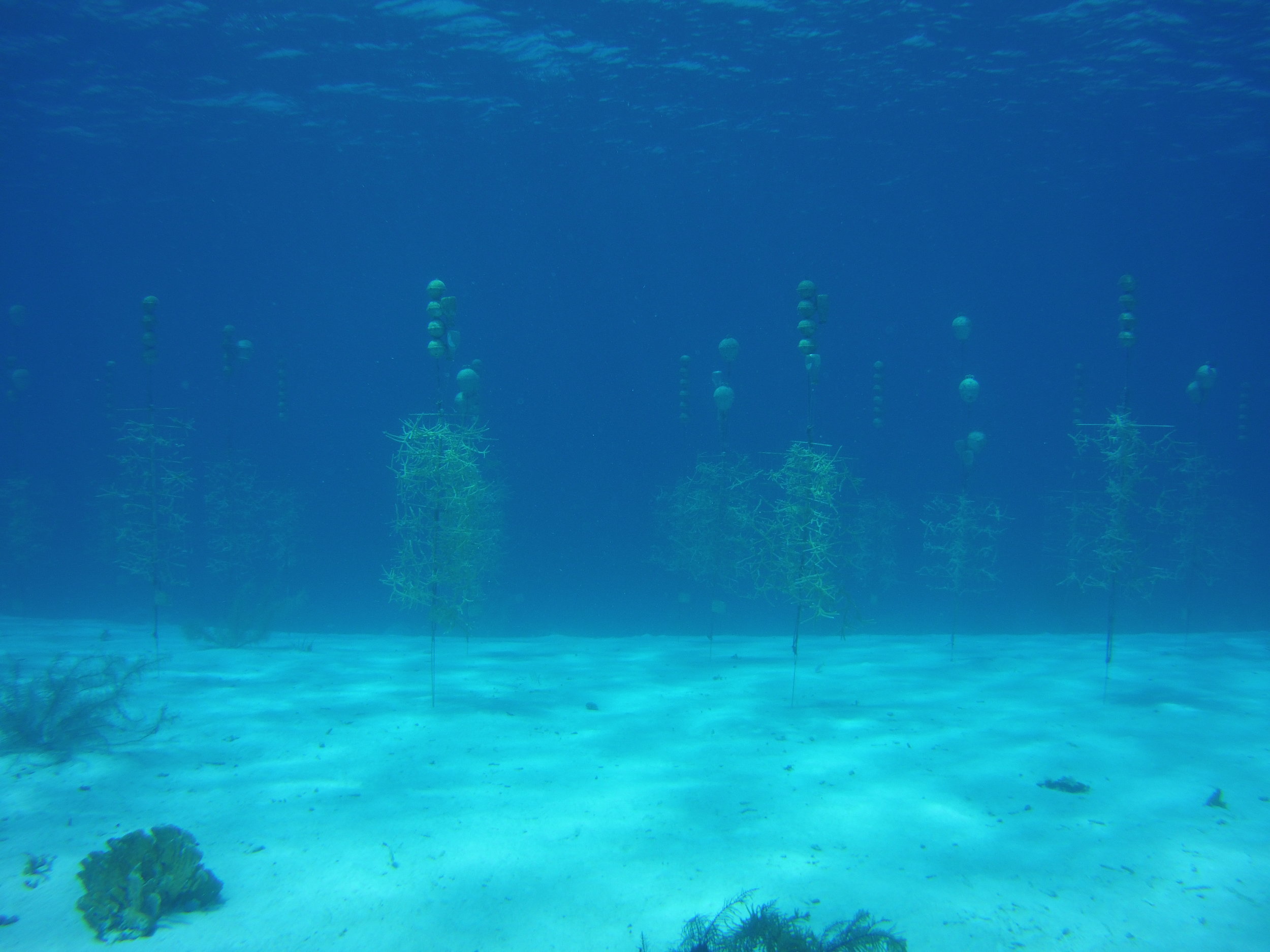
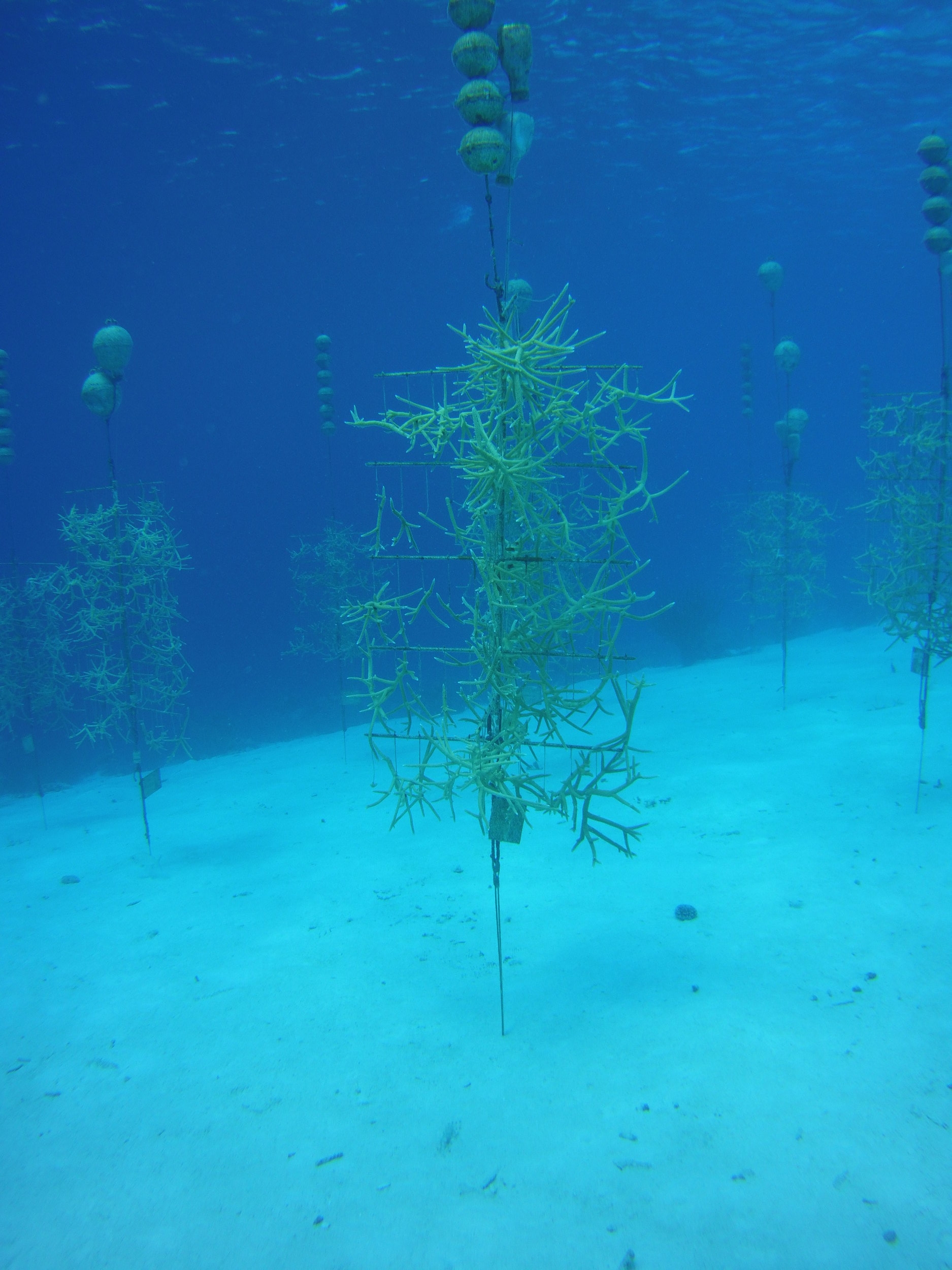
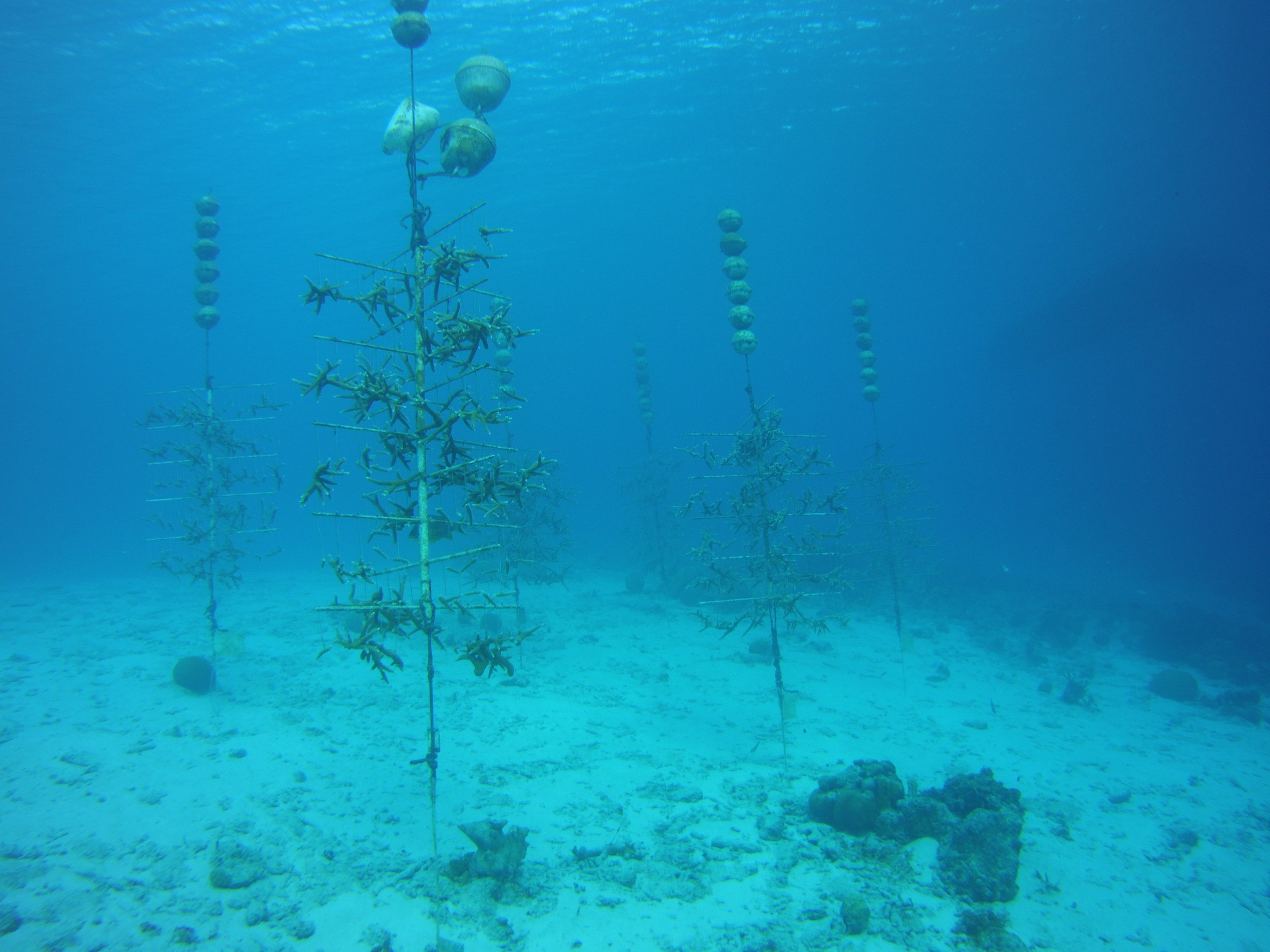
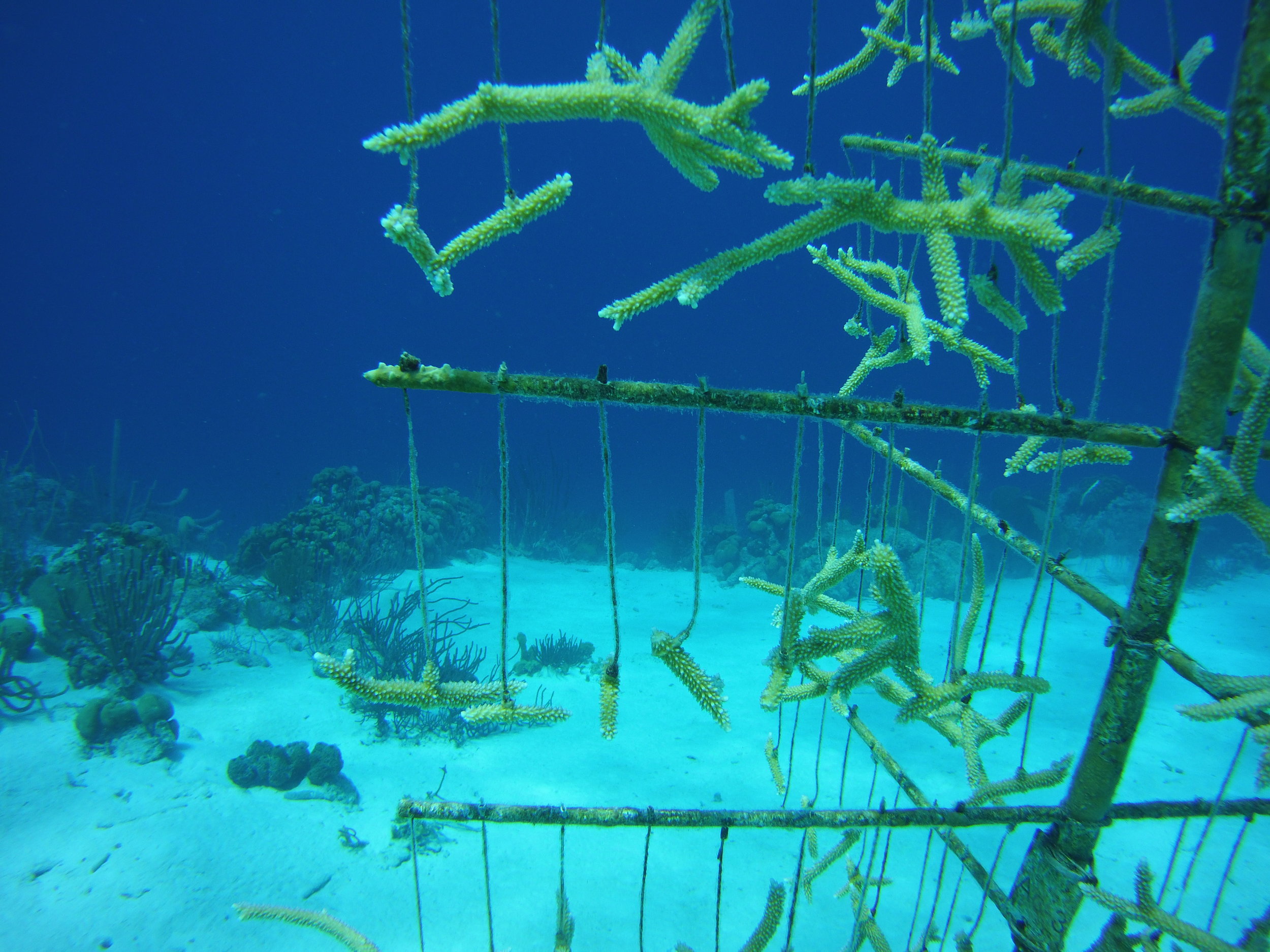
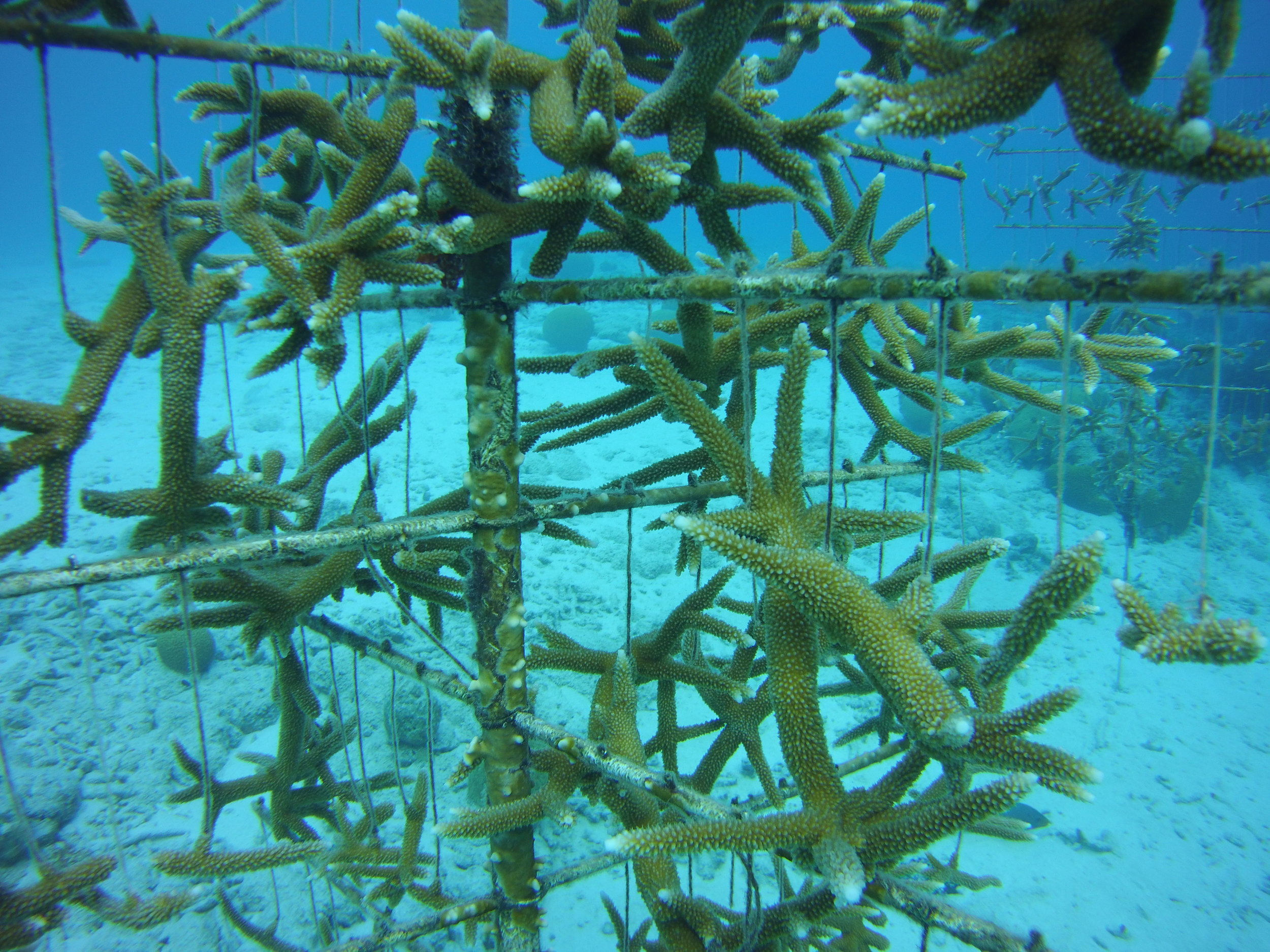
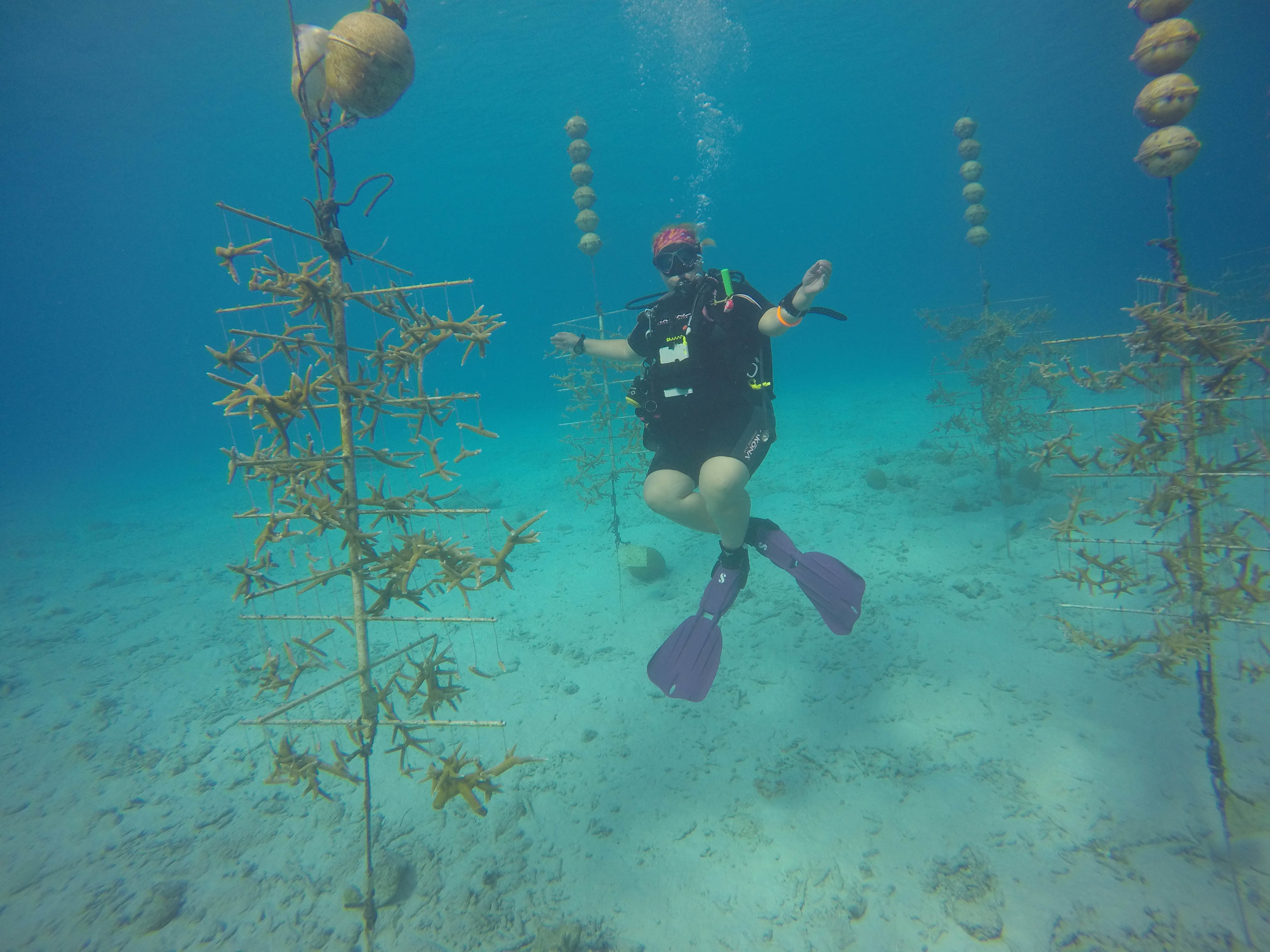
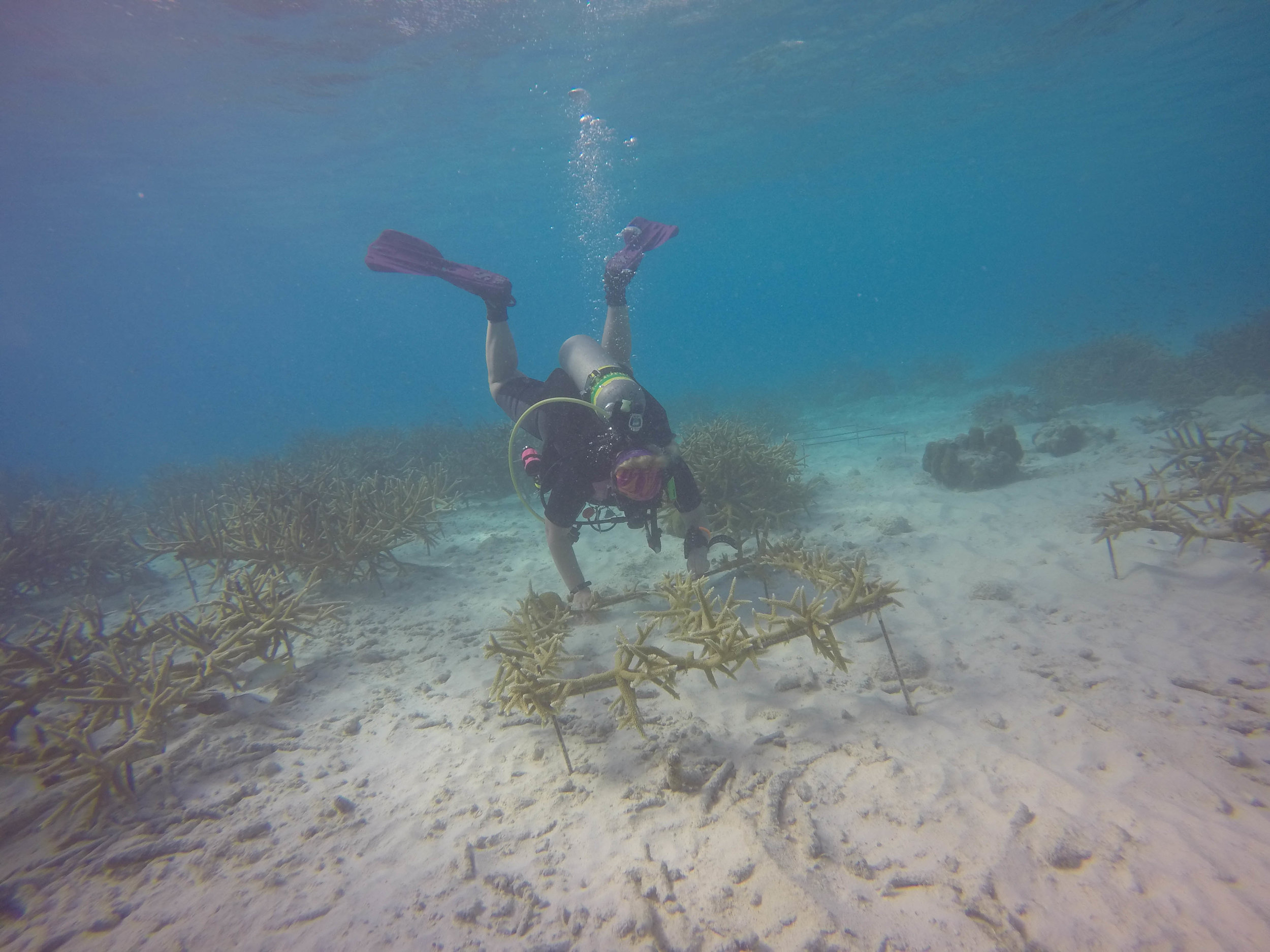
Learn More About:
The Coral Restoration Foundation
The Coral Restoration Foundation Bonaire
Good Words to Know:
Ecosystems: how we describe all of the organisms and their environment living together.
Polyp: the basic, single structure, that forms corals. Sea anemones also have polyps.
Catastrophic: something that is really, really, really bad (it comes from catastrophe!)
Thicket: a dense grouping of coral (so dense it looks like a shrub or bush)





